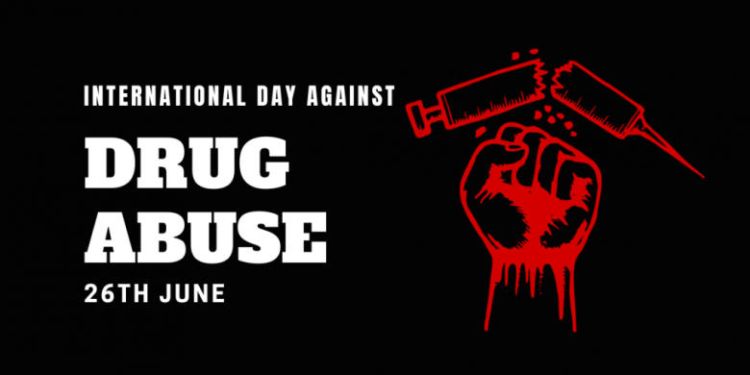In news
June 26 every year is observed as International Day Against Drug Abuse and Illicit Trafficking or World Drug Day
World Drug Day & its history
It intends to create awareness about issues related to drugs and seek international cooperation to combat its effects on health, society, and governance.
The day June 26 was chosen by the UN General Assembly, on December 7, 1987, as International Day against Drug Abuse and Illicit Trafficking by its resolution 42/112.
The assembly made the decision to observe this day as an expression of its resolution to make international society free of drug abuse.
This year’s theme:
The theme is ‘Share Facts On Drugs, Save Lives’.
According to the United Nations Office on Drugs and Crime (UNODC), the motive is to combat misinformation by sharing real facts on drugs from health risks and solutions for the world drug problem to evidence-based prevention, treatment, and care(especially verified sources like UNODC).
Importance
- Amidst Covid-19 pandemic a growing sense of global community and solidarity continues to emerge, as does the need to ensure health care for all.
- World Drug Day is a day to share research findings, evidence-based data and life-saving facts, and to continue tapping into a shared spirit of solidarity.
A website for Nasha Mukt Bharat Abhiyaan(NMBA)
- The Ministry of Social Justice & Empowerment launched a website for NMBA on the occasion of World Drug Day .
- The website provides detailed information about the Abhiyaan and its activities, give glimpses through the Photo & video gallery.
- It also provides IEC resource material and information on the institutions set up by the Ministry with the aim of Drug Demand reduction.
- The Ministry of Social Justice & Empowerment, which is the nodal ministry for Drug Demand Reduction, implements various programmes for drug abuse prevention across the country.
- 272 high burden districts were selected under NMBA.
- Under the campaign, nearly 8000 youth volunteers have been going door to door and canvassing against substance abuse.
- The ‘Nasha Mukt Bharat Abhiyaan’ or a ‘Drugs-Free India Campaign’ was flagged off on 15th August 2020 across 272 districts of the country.
- The focal points of the Campaign are preventive, mass education and sensitization, capacity building of service providers, positive partnership with educational institutions, and augmentation of treatment, rehabilitation and counselling facilities.
Fact sheet on drug users in India
- There are more than 60 million drug users in the country of which a large number of users are in the age group of 10-17 years.
- There are more than 500 voluntary organizations across the country, which are assisted financially under the NAPDDR scheme of the Ministry.
- These NGOs have been actively involved in the implementation of the drug-free India campaign.
World Drug Report 2021 of UNODC
- The report provides a global overview of the supply and demand of opiates, cocaine, cannabis, amphetamine-type stimulants and new psychoactive substances (NPS), as well as their impact on health, taking into account the possible effects of the COVID-19 pandemic.
- COVID-19 has triggered innovation and adaptation in drug prevention and treatment services through more flexible models of service delivery.
- As per the report, around 275 million people used drugs worldwide in the last year of unprecedented upheaval caused by the COVID-19 pandemic, up by 22 per cent from 2010.
- Between 2010-2019 the number of people using drugs increased by 22 per cent, owing in part to global population growth.
- Based on demographic changes alone, current projections suggest an 11 per cent rise in the number of people who use drugs globally by 2030 and a marked increase of 40 per cent in Africa, due to its rapidly growing and young population.
- It reveals that cannabis potency has quadrupled in some parts of the world over the last two decades, while the percentage of adolescents who perceived the drug as harmful fell by as much as 40 per cent.
- This development came despite evidence that cannabis use is associated with a variety of health and other harms, especially among regular long-term users.
- Social impact:The Covid-19 crisis has pushed more than 100 million people into extreme poverty, and has greatly exacerbated unemployment and inequalities, as the world lost 255 million jobs in 2020.
- According to the latest global estimates, about 5.5% of those between 15 and 64 have used drugs at least once in the past year, while 36.3 million people, or 13% of the total number of people who use drugs, suffer from drug use disorders.
- It has found that over 11 million people are estimated to inject drugs, half of whom are living with Hepatitis C.
- Opioids continue to account for the largest burden of disease attributed to drug use.
- Lower perception of drug use risks has been linked to higher rates of drug use.
- The findings of the report highlight the need to close the gap between perception and reality to educate young people and safeguard public health.














